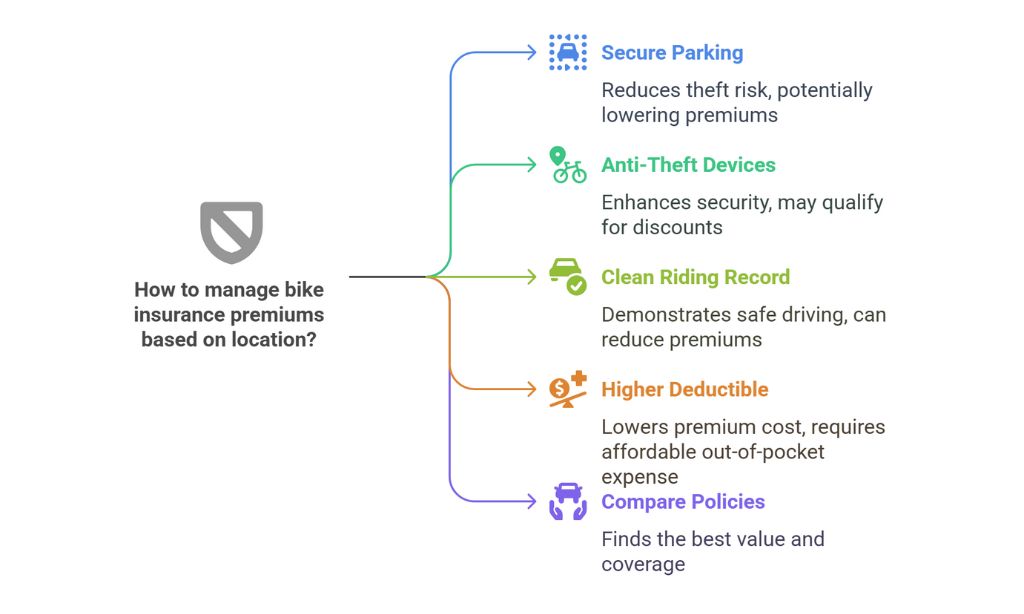Bike insurance offers vital financial protection in the event of accidents, theft, or damage to your vehicle. In India, all vehicle owners—whether of two-wheelers or four-wheelers—are legally required to have either third-party or comprehensive insurance. However, when purchasing a policy, it’s essential to understand that your location can significantly impact the premium. Knowing how your surroundings affect your two-wheeler insurance helps you make informed decisions and potentially reduce your insurance costs.
Why Bike Insurance Is Important
Bike insurance provides financial security in case of unfortunate events such as accidents, theft, or damage. It eases the financial burden of repairs or replacement, ensuring you don’t have to pay out of pocket. Additionally, it covers third-party liabilities—if your bike causes injury or damage to another person or their property, your insurer will handle the costs.
In India, bike insurance is not only wise but also legally mandatory. Having the right policy in place offers peace of mind, knowing you are financially protected in unexpected situations.
How Your Location Affects Bike Insurance Premiums
Your location plays a crucial role in determining your bike insurance premium. Insurers assess several factors in your area that may influence the likelihood of accidents, theft, or damage. Based on this, they adjust policy premiums accordingly. Here’s how your location can impact the cost of your two-wheeler insurance:
- Accident Rates: Living in an area with a high accident rate or frequent claims history can result in higher premiums. Such areas are viewed as higher-risk zones by insurers.
- Theft Risk: Neighbourhoods with elevated theft rates often see increased insurance costs. Urban areas with frequent bike thefts usually attract higher premiums.
- Traffic and Congestion: Densely populated cities with heavy traffic increase the likelihood of accidents. More traffic means greater risk, which usually leads to higher premiums.
- Rural vs Urban Settings: In contrast, rural areas tend to have less congestion and lower accident rates, which may lead to reduced premiums.
- Weather Conditions: Locations prone to extreme weather—like floods, storms, or harsh temperatures—can increase the risk of damage. This can also raise your insurance premium.
- Local Regulations: Some states or cities impose specific insurance requirements or taxes, influencing the final premium. In contrast, low-risk areas may offer lower rates or discounts.
Tips to Lower Bike Insurance Premiums Based on Location
You can take several proactive steps to reduce your bike insurance premium, particularly when location is a factor:
- Register in a Low-Risk Area: If possible, register your vehicle in an area with lower accident and theft rates. Insurers often charge lower premiums for bikes registered in safer zones.
- Park in a Secure Location: Keeping your bike in a secure garage or gated area reduces the risk of theft, potentially lowering your premium.
- Install Anti-Theft Devices: Features such as alarms or GPS trackers enhance bike security. Many insurers offer discounts for bikes equipped with such devices.
- Maintain a Clean Riding Record: A history free of accidents or claims demonstrates safe driving habits and can help reduce your insurance premium.
- Opt for a Higher Voluntary Deductible: Agreeing to pay a higher deductible [the amount you contribute in a claim] can lower your premium. Ensure the deductible is affordable for you.
- Compare Policies: Always shop around. Premiums and benefits vary between insurers, so comparing quotes helps you find the best value.
- Ask for Discounts: Some insurers offer location-based discounts or incentives for bikes with safety features—don’t hesitate to ask.
Takeaways
Where you live has a direct influence on how much you pay for two-wheeler insurance. Urban areas with more congestion, theft, or accident reports typically attract higher premiums. Conversely, quieter or rural areas may benefit from lower costs due to reduced risk.
Additionally, the IDV in bike insurance [Insured Declared Value]—the maximum amount you can claim in case of theft or total loss—plays a crucial role in calculating your premium. A higher IDV usually results in a higher premium, but it also provides greater financial protection.
By parking your bike securely, installing anti-theft devices, riding responsibly, and choosing the right policy, you can significantly reduce your premium. Remember to compare providers and ask about discounts to find the most suitable and cost-effective bike insurance. Understanding the impact of your location and the IDV in bike insurance will help you make smarter insurance decisions and keep your two-wheeler protected.







































